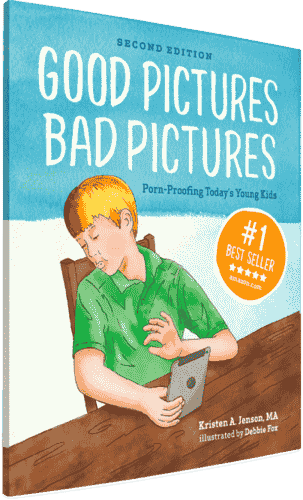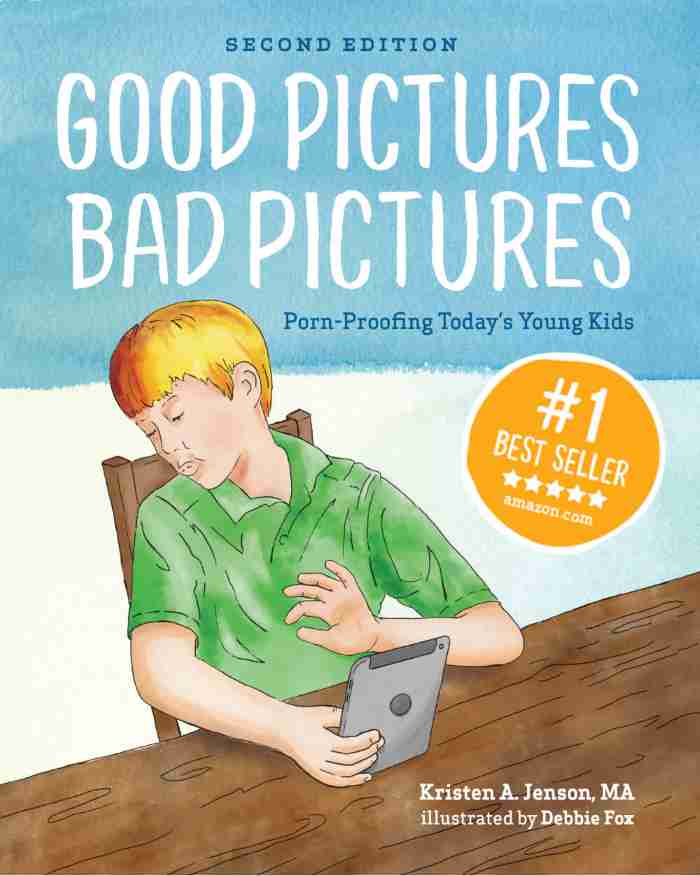

Your Kids Are Safe Online at School, Right?
Are you confident that your kids are safe online at school? Will they be exposed to pornography on school devices? Do you trust that your kids’ teachers and administrators have policies in place to handle this problem?
Think again.
In the days of mobile devices, complete protection from pornography at school has become an impossibility, underscoring the need for young kids to install their own internal filter. They need to know how to recognize it and how to react.
One mom, Lydia, shared the following story with me about her three elementary school age daughters. Two of them were exposed to pornography at school, and one of them helped her classmate who was being shown pornography at home. Lydia's story is becoming all too common. I share it with permission:
My Kids Were Exposed to Porn at Their School
Because some of my friends were sharing the book Good Pictures Bad Pictures: Porn-Proofing Today's Young Kids on Facebook last fall, I read it and learned that the most common age for kids to begin looking at pornography is between the ages of seven and 13. And some kids as young as seven need treatment for a full-blown addiction!

The picture you see here is of my three older daughters, now ages 9, 11, and 13. All three encountered pornography at elementary school in 3rd or 4th grade.
My Oldest Saw Porn in 4th Grade at School
The oldest is pictured on the right. She was in 4th grade, using a school computer when an inappropriate image popped up on the screen. Because we had discussed the dangers of pornography at home and taught her the CAN DO Plan™, she knew how to recognize it and how to react. She immediately turned off the computer and told her teacher what had happened. The school responded by increasing their already substantial filtering software.
My Second Daughter Recognized a Dangerous Situation
My second daughter, pictured on the left, has never seen a pornographic image but knew how to help a girl at school who had. When she was in 3rd grade, she overheard a girl tell her friend that her dad made her watch videos of naked people. Because we had discussed the dangers of pornography at home, she knew how to recognize it and how to react. She told her teacher and the school responded by addressing the needs of the student and putting a stop to the abuse.

Get the Ultimate Guide to Online Safety at School. CLICK HERE or on the image at the bottom of the post.
[[CTA]]
My Third Daughter Helped Change a Teacher’s Approach
My third daughter, pictured in the middle, saw pornography on a school computer in 3rd grade. The class was busy doing workstations while the teacher helped a small group with their reading. Some kids were at the computer station in the classroom, looking for a picture of a soccer ball for a school project.

One of the images they encountered was a woman’s naked breasts with soccer ball tattoos. They started giggling and a group of children started to gather to look at the photo. Because we had discussed the dangers of pornography at home, my daughter knew how to recognize it and how to react.
She told the kids that the image was inappropriate and to turn it off, and then she told the teacher. The teacher responded by redirecting the class to another activity, missing an opportunity to talk to the children about the dangers of pornography.
The next day, when those same kids were able to use the computer, what is the first thing they did? They did the same search, looking for the photograph again. When they found it, a larger group gathered to look at the photo.
My daughter responded the same way by telling them to turn it off and telling her teacher. This time, the teacher used it as a teaching opportunity to talk about what is appropriate to look at while at school and then addressed the filter breach with the administration.
Two Lessons Learned
We learn two things from this last example.
- First, there's a huge difference between the way children react who are taught how to recognize pornography and the way they react when they are not prepared.
- Second, adults can either ignore pornography or address the issue with clear guidelines.
-
Let’s Stand Together
If we think our kids are safe online at school, we may be kidding ourselves. If we think of pornography addiction as an issue that hits during teenage years through adulthood, we are wrong. This is a problem among young children. No matter how good our internet filters are or what we do to avoid pornographic media in our home, it is so prevalent that it is not enough to ignore it or avoid it.
In order to protect our kids, we need to teach them how to recognize it and how to react. And we need to stand together to fight it.
Need more proof that pornography exposure is common at elementary schools? Read Internet Safety for Schools: Why We Can't Depend on Filters. And don't forget to get get your FREE 10-point Checklist. This guide will give you the essential information you need to determine if your child's school is safe. Click on the image below:




Good Pictures Bad Pictures
"I really like the no-shame approach the author takes. It's so much more than just 'don't watch or look at porn.' It gave my children a real understanding about the brain and its natural response to pornography, how it can affect you if you look at it, and how to be prepared when you do come across it (since, let's face it... it's gonna happen at some point)." -Amazon Review by D.O.








